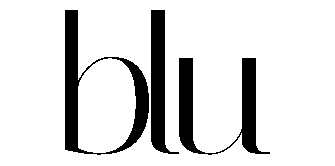The most common question I get asked in the salon is, “I have ________________ (insert dry, limp, fine, frizzy, damaged) hair, what do I do?” I wish there were a magic potion that I could give clients that would take away every client’s hair problem. But there is not one shampoo or conditioner that will make hair amazing, and while I have some fantastic hair products on my shelves, the answer to hair problems lies in a combination of good daily habits that go beyond just one magic potion.
Heat (blow dryers, irons, rollers, etc.) deprives the hair of moisture and essential fatty acids. Chemicals do the same (color, perms, relaxers, etc.) Mechanical damage (brushing wet hair, combing, teasing, etc) can negatively affect the hair’s cuticle layer, causing hair to be dry, dull, and limp.
How do we correct the problems? The very best way is to understand that good daily habits can correct many before they start.
Everyone ought to have:
- A detangling comb
- A “Thermal Protector” (Any KINACTIF Extract will do the trick)
- A good salon brand shampoo
- A good salon brand acidifier (a conditioner with a pH 3.0 TO 5.5)
- A good leave-in conditioner with UV protectors (KINACTIF Sun Care Protective Treatment is AMAZING!)
- A blow dryer with a “cool” setting
- A styling product meant for your hair type – gel, spray gel, foam
- A good working hair spray (light hairspray you can comb thru)
- A good finishing spray ( firm hairspray to “set” the hair)
Most professional hairstylists have these; that is why your hair feels so good when you leave the salon.
1. The detangling comb is designed to be used on damp hair. Start at the ends and work up.
2. A thermal protector STOPS heat damage before it starts, protecting the outer layers of the hair.
3. Professional salon brand shampoos should have a pH of 4.5-5.5 and use gentle cleansers. Your hairstylist should know the pH level of the shampoos they carry. Pro brands are generally more concentrated.
4. An acidifying conditioner compacts the cuticle, detangling, adding body, adding natural shine, increases the alpha bonds in the hair – it is a must. Using a Leave-In Conditioner helps to seal down the cuticles. For those of you with fine limp hair, you still need a conditioner designed for your hair’s specific needs.
5. The sun and tanning beds will cause chaos with the hair. Make sure your conditioner has plenty of sunscreen.
6. A “cool” setting on a dryer helps “set” the hair. It causes less damage than hotter settings.
7. A good foamer, gel, spray gel, root lifter, smoother, oil cream, etc., will add body, decrease frizziness, and help you style your hair without excessive pulling, drying, flat ironing, and heat.
8. A good “working spray” will aid you when blow-drying, setting, sculpting, or using irons. It is a hair spray that you can apply to damp (if you wish) or dry hair.
9. Get a good ‘finishing spray” – unlike a “working spray,” a finishing spray will keep the hair or sections of the hair in place all day if you prefer more volume and prefer your hair to stay in a particular style.
10. A last tip, do not do perms or color at home. Yes, you will spend less upfront, but a cosmetologist will probably have to correct the damage. Many professional hair color lines and chemicals are infused with essential oils, have a lower pH, and are less damaging, creating more shine than store-bought brands. A hairstylist understands how to apply and mix suitable formulations for various outcomes. In the long run, for a stylist to fix dry, damaged, or box color mistakes will cost more than if you discussed your desired outcome, time management, and budget with her/him. A good hairstylist should take time to do a thorough consultation. You should feel confident with the plan they create for you. If you aren’t already aware. I offer virtual consultations. Booking is easy, and virtual consultations are a convenient way to discuss your hair problems and desired results.
If you follow these steps, you will be on your way to a shiny, healthy style that will have people asking, “Who does your hair?” Hopefully, your answer will be #kimdoesmyhair

